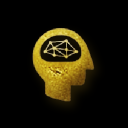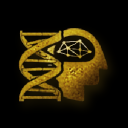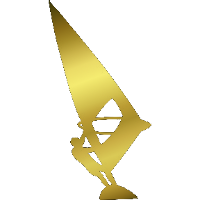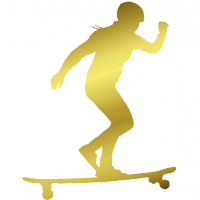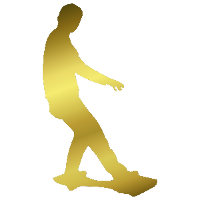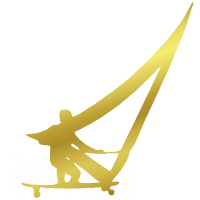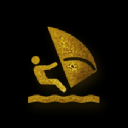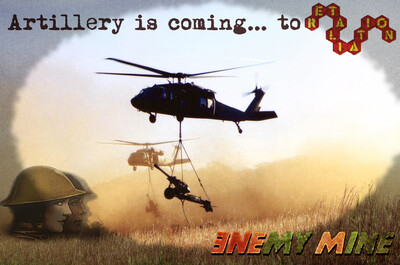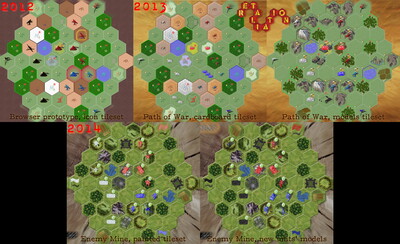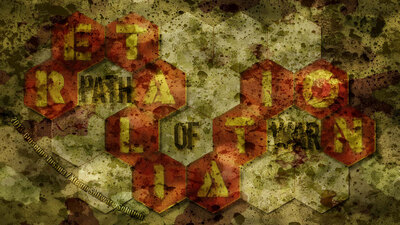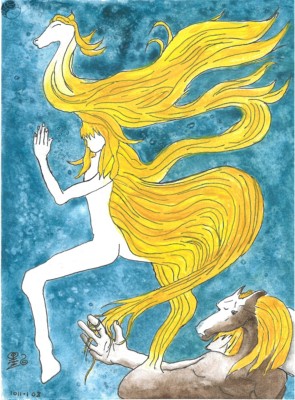- About this website and its author
-
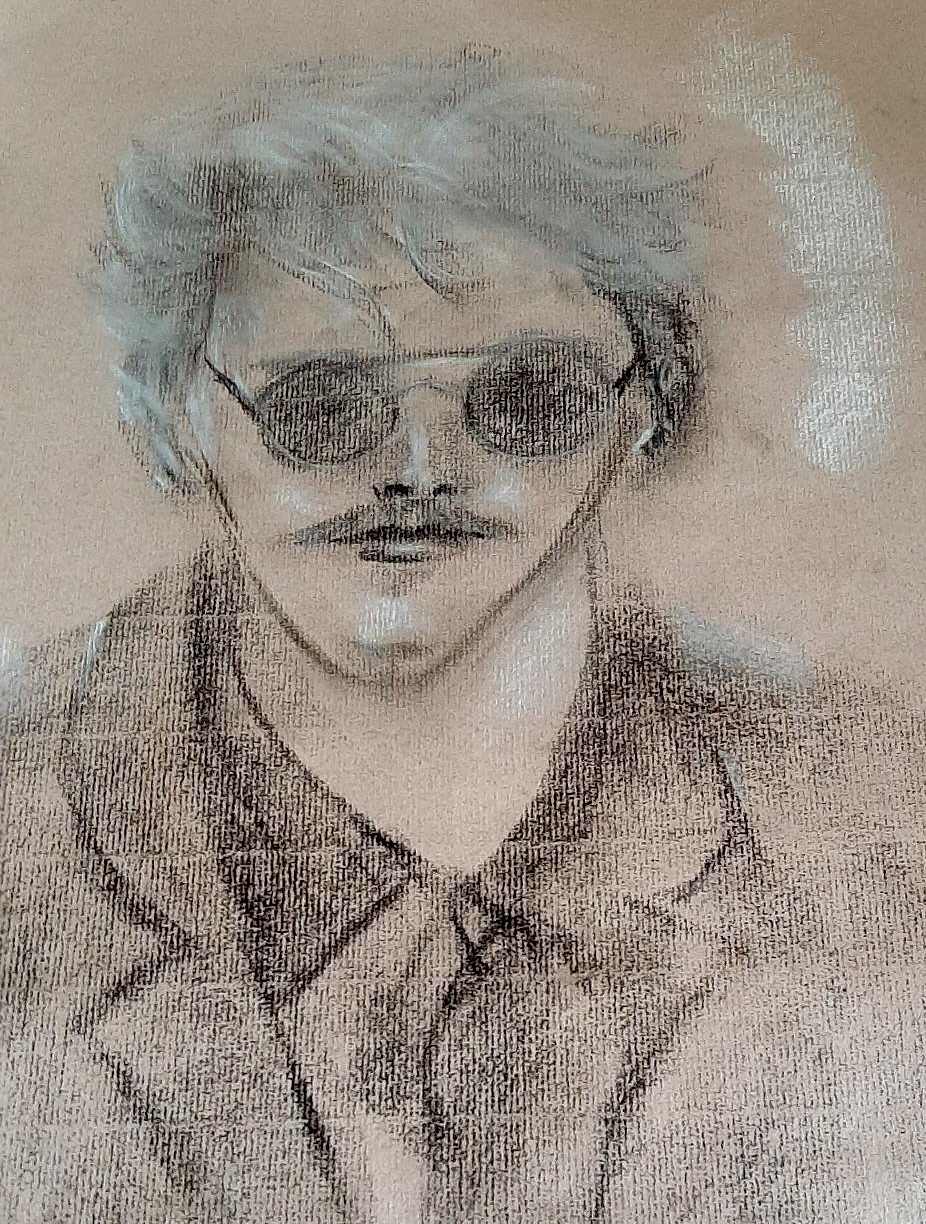
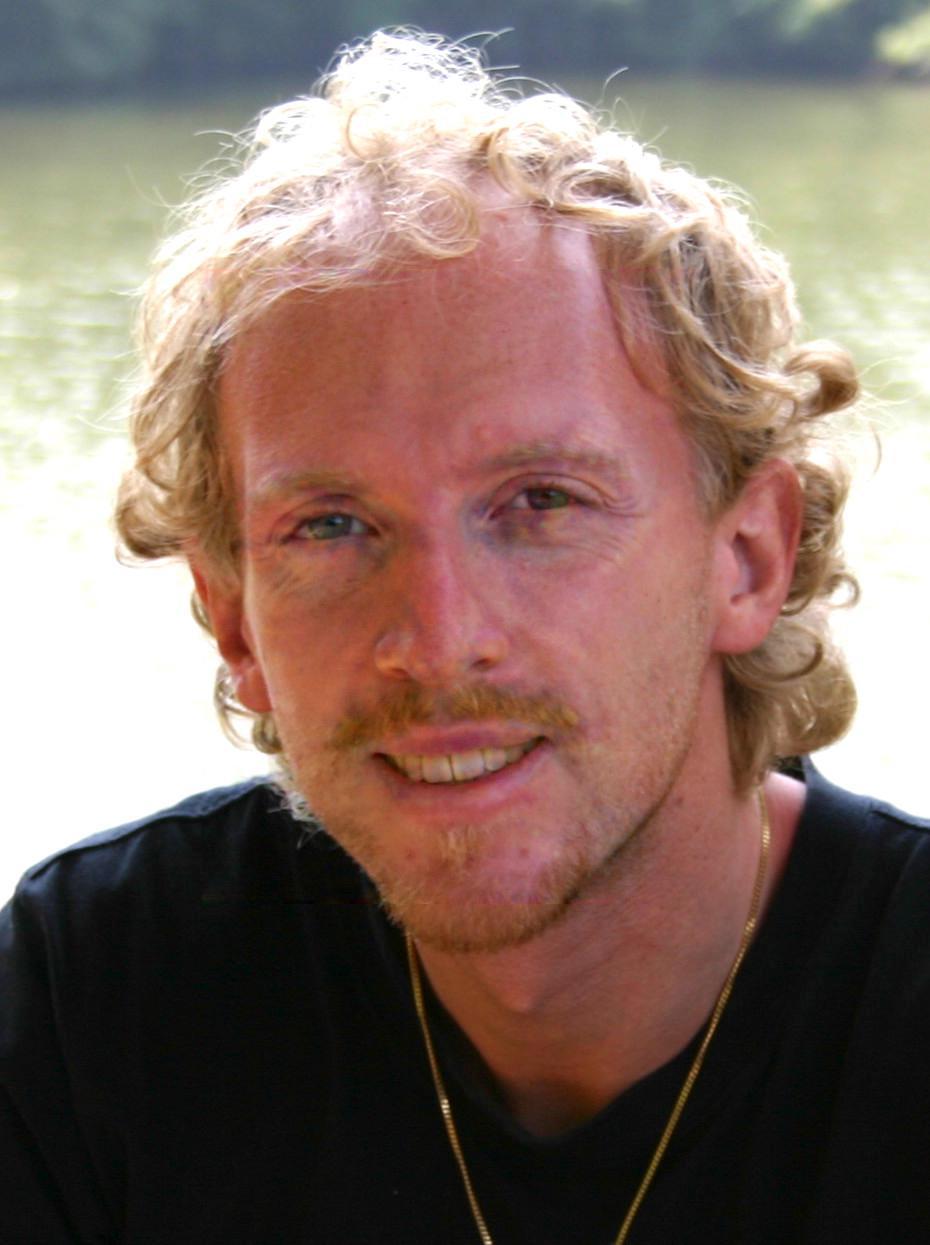
Welcome!
The pages of this website will introduce you to dr Giuseppe Insana: to his thoughts, to his words and to his creations...
The Author is on a multi-threaded path towards eclecticism: towards cultivating himself and blossoming in all possible directions, endeavours, arts, knowledge fields, skills...
Explore freely and enjoy your journey... into me.
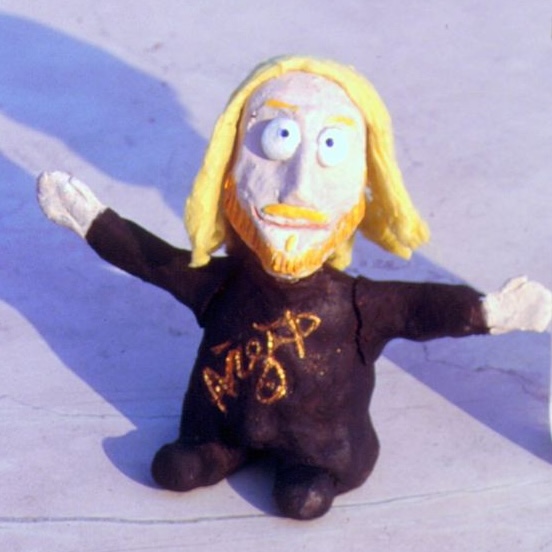
External Links:
github/g-insana
linkedin.com/in/insana
orcid.org iD
- Curriculum vitae - résumé
-
You can download my CV in pdf format. Last updated: 2025.01.18
- Contact information
-
My email address is... (apply minimal variable manipulation to obtain it):
$surname = 'insana'; $my_email = $surname . '@' . $surname . '.net'
-
...if your allegiance lies with perl
alternatively:surname = 'insana' my_email = surname + '@' + surname + '.net'
-
...if you are more of a python persuasion
or even:surname = "insana"; my_email = surname * "@" * surname * ".net"
-
...if you have converted to julia.
And here you can get my Public Key (PGP/GPG)
- My PGP/GPG public key
-
If you are (justly) concerned about privacy, please use pgp or gpg encryption when corresponding with me.
From this page you can get my current pgp/gpg key (as an ascii key text block that you can copy&paste into your key manager).
You could also retrieve (to double check there has been no web-spoofing or MITM attack) my key using the WWW Based PGP 5.0 Key Server System or MIT PGP Public Key Server or PGP global directory verified key service (searching for strings "Giuseppe Insana" or "0xCD84801E"): e.g. pgp.net search, pgp.mit.edu search
Note that in 2017, after 19 years of faithful use, I adopted a new key. If you have my old key, you can check this key transition statement to facilitate your trust of my new key. That statement is signed by both the old and the new key.
My current key and subkeys ids (get the ascii armoured key text block here):
uid Dr Giuseppe Insana (http://insana.net) pub 4096R/A555ADDDCD84801E 2016-04-11 sub 4096R/A4F3BB5FCCCC83BC 2017-04-11 sub 4096g/05D4B08DFFE1A55F 2017-04-11 fingerprint = A4C3 E3AC 7716 5C89 EAD3 AAA4 A555 ADDD CD84 801E
- Read, Write
-

This website could be perceived like a book, organized in several different chapters, talking about many arguments and also referring to many other books. And like every book it has a beginning. In this case, the beginning it's actually about books...
At the age of 4 I taught myself how to read and write and, since then, books have been my trusted companions, secret confessors, fountains of knowledge, windows into other worlds, wings to fly with.
I remember one of my earliest disappointments, from the time I was in kindergarden. I was very proud of my brand new self-acquired skill - writing - and invited all the other kids to simply ask and I would write for them whatever word they wanted. I could write just ANY word...
Oh, they were so happy and started queueing to have one "written word" all for themselves... but nearly all the kids, invariably, wanted the same word written by yours truly: CACCA (i.e. POOP)!
I was so sad! What was the point of holding the ability to write JUST ANY word and being requested only one and the same all the time? Can you imagine what those wise and learned scribes in ancient Egypt felt, after a lifetime of mastering their art, when the pharaoh's sons invariably asked them to draw little excrement glyphs (1), again and again?(1: that hieroglyph is encoded in Unicode as 𓄽 [Gardiner's sign F52], but was possibly drawn by the poor scribe in Arale manga style... as in the poop emoji 💩)
Il vento mi risveglia: impaziente di leggere gira le pagine.
The wind awakens me: he cannot wait to read on and so turns the pages.
- Sea, Swim
-

Another primeval and eternal love, from the early beginning of my life: the deep blue immensity, the unbounded horizon, the uncharted depth: the SEA.
First it was swimming, one of my first self-taught skills, starting by simply flapping hands and legs on the shoreline, before plunging in.
Soon after came freediving and the "aquatic sofa" (sitting or laying down on the sea floor by expelling all breath to really "sink".. I could sit easily even at a depth of 3,1m).
Snorkelling of course followed suit, and with it the constant exploration, daring everytime a little more into the unknown. Much later I learned windsurf and sailing. In any case, anything connected to the sea strongly resonates with me, and I feel the Sea as a stern but just Father to me, strong and powerful, deep and wise, feared and loved.
The father immense blue, dauntingly welcoming Gliding under the waves, golden rays become his friends
onde al tramonto rimbocca le sirene il mare lenzuolo
sopra lo scoglio osservo immenso mare colpir la roccia
- Languages
- Mystery, Civilizations
-
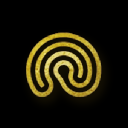
One of my first fascinations was reading about ancient civilizations: their writing system, their mythology (one of my favourite book series was "Gods and heroes of ancient X", with X being Egypt, China, Scandinavia, Greece..), their art and architecture (incredible was discovering about the Maya on a book based on the story and illustrations of Stephens and Catherwood), their history...
I avidly started absorbing countless pieces of knowledge about ancient inventions, number systems, clothing styles, weaponry... and anything which was so mysterious and oh so appealing
Labyrinths: (to be continued)
- Science
- Chess, Gaming
-
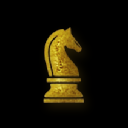
As a child I learned to play tons of games: card games, social boardgames and strategic jewels like checkers and chess.
Unfortunately, it was only very late in my life that I was introduced to WeiQi, the most beautiful and deep of all strategic games. The most ancient strategy board game and the most elegant! I probably would be able to become a better player had I started playing at a tender age.
Even after I discovered videogames, I never lost the love for the physical games and all the features they have which could never be replicated by a videogame: the presence next to you of the other (a single opponent or a group of friends), the texture of the cardboard or of the wooden board, the feeling of the dice (or counters or pieces) in the hand, the sound pieces make when placed on a board, the smell of wood, holding your breath during a dice roll, feeling your heart pounding as the opponent's hand initiates the move she has planned, the move you feared she would do...
A special category of games I played for many many years is that of Role Playing Games, games in which players assume and act a role in a coherent and evolving narrative that they help shaping.
In fact I even designed some RPG and created them as both table top rulesets and coded them as playable MUSH: online multiplayer Role Playing Games, from which modern MMORPGs ultimately descend.
In later years I have also designed strategic boardgames and videogames, many of which got developed and published.
(Work in progress...) - Videogames
-
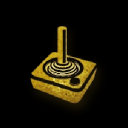 (Work in progress...)
(Work in progress...)
A part for some limited time during childhood playing "ancient" (80s) coin-ops ("Vanguard", "Ghosts'n'Goblins", "Golden Axe" "Double Dragon", "Dragon's Lair", "Star Wars") in some arcades, most of my videogame time has been on computers I owned, starting with the legendary and unforgettable C=64 (Commodore CBM 64), progressing to Amiga 500 and subsequently across a long series of PC to finally arrive to recent Android smartphones.
I've never owned nor wanted to own a console as I always felt videogames were only a small part of the fascination I have with computer devices. That's not to say I haven't played my share of console games ("Tekken" in primis), but always through (incredibly good) console emulators.
One of the first memory of managing to play on historical office IBM PC must be the long hours playing Sopwith on a long persistence green phosphor CGA monitor...
In 1987 I created my first videogames using C64's Shoot-'Em-Up Construction Kit.
My all-time favourite videogames: [TODO]
For the videogames I designed see the page on the Retaliation game series.
- Coding, Computers
-
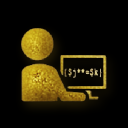
My first computer has been the glorious Commodore CBM C64. I bought it by myself when I was 9 years old by first raising the necessary capital. After having more or less failed to convince my parents that it would have been a great help for study, family finances, cooking recipes and such.. I did the tour of all the friends and relatives that I knew would usually buy me presents and delivered to each a speech which more or less ran like this: "come xmas please do not buy me any present.. instead please give me a little money which I will use to purchase a computer". My fundraising idea turned out very successful and I hence had the chance to start
playing videogames:D ehm.. using the computer productively.I never got the chance to prove how useful it could have been for mom's recipes or dad's expenses' accounting, and indeed I played tons of videogames, but most importantly I found out since day one that not only the computer could load and run an apparently infinite variety of software.. but that you could actually program the computer, teaching it anything you wanted it to do and immediately see the results. I wolfed down the Basic programming manual, I got myself specialized magazines teaching about c64 programming and I fell in love with this new amazing world of CODING!
I started coding everything that I could imagine.. and my imagination was already so wide.. I became a hacker and learned how to break software copy protections or personalize the games I liked the most. I passed entire floppies sector by sector with the disk editor multiple times to break encryptions (looking for readable strings after trying multiple combinations of a reversible crypto function).
I even coded viruses, from funny harmless ones to others that would basically crash the 1541 floppy disk drive... I ran as a little pirate overseeing sourcing and distribution of thousands of games to the ever more growing network of c64 users. I coded solutions for tower of hanoi, crypto algorithms, labyrinths designers, shoot'em up games, musical and graphical intros.. and in the end I even created a kind of graphical desktop environment - yes, for C64! - which was showing a kind of desk (replete with drawers to boot) and a hand which was moved by the joystick to access files and programs...
After that there was no more stopping. I moved from C64 to an Amiga, then to a long list of msdos computers (086, 286, 386, 486.. pentium etc etc) since the time of those with the evil green phosphors monitor light persistence, perforated paper printers and huge heavy keyboards.. until I learned to assemble my own PCs out of the chosen components.
A major turning point was the discovery of the unix environment, which coincided with the beginning of my university time.
(to be continued: hp-ux, corewars, genetic algorithms, alife, lex, mush, covariation and molecular modelling, bioinfo human variation and genomic analyses, computational linguistics, inference engines, machine learning, deep learning...) hp-ux sysadmin
My recent code repositories are available on github
- Photography
-
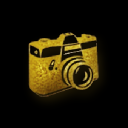
My photos can be loosely organised in the following categories: Portraits, Architextures, Natures and Objects. Clicking the following pictures will open a corresponding slideshow gallery.
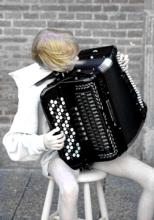 Portraits (best)
Portraits (best)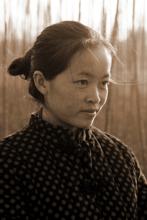 Portraits 2006-
Portraits 2006-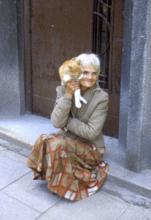 Portraits 1996-2006
Portraits 1996-2006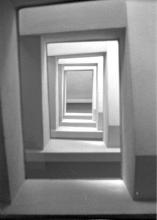 Architextures (best)
Architextures (best) Architextures 2006-
Architextures 2006- Architextures 1996-2006
Architextures 1996-2006
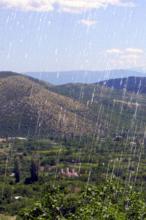 Natures (best)
Natures (best) Natures 2006-
Natures 2006-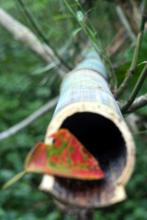 Natures 1996-2006
Natures 1996-2006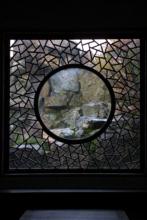 Objects (best)
Objects (best)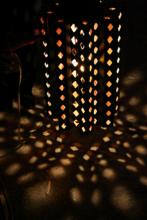 Objects 2006-
Objects 2006-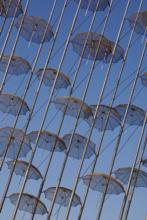 Objects 1996-2006
Objects 1996-2006
“His objective rests lightly over people and things. He never twists the object of his studies, nor does he excessively exalt it; on the other hand he observes it delicately, seizing the most intimate essence and then covering it again with a new dress – always elegant, always original – created by the wise gaze of the artist”.
- Drums
-
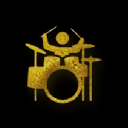
As a child I started banging on a toy drum; by the age of 12 I joined the city ensemble in order to get access to lessons and began learning music notation, sight reading, drums and percussions. Oh.. how I hated that ensemble!... but it was my ticket into professional tuition.
I was very fortunate to be taught by a truly great teacher, the famous Gianni Bertoncini, and my passion for rhythms grew and grew.
My favourite drumming style is my personal kind of House-Metal fusion. It employs a combination of ghosted buzzing snare and syncopated flam double-bass play, with embellishment drags on the hihat or ride. A couple of audio samples will hopefully clarify what I mean.
A very short demo:
And a longer one:Over the years I've played drums and percussions in many philharmonic ensembles, rock bands and latin american percussion groups. Those with which I've performed for several years are:
- Complesso Strumentale, ensemble (Vicenza, Italy)
- RedHouse, rock covers (Vicenza, Italy)
- Vento dei Sogni, rock covers (Vicenza, Italy)
- Feedback, indie rock (Verona, Italy)
- Arco Iris, latin percussion band (Cambridge, UK)
- White Funeral Tea, indie rock (Cambridge, UK)
- Cambridge Community Orchestra, ensemble (Cambridge, UK)
I stopped playing - a part from rare occasions - when I moved to Asia for work and then later started a family; but after a hiatus of 16 years (!) I eventually resumed daily drumming in 2021. Fortunately, my limbs had not forgotten anything and my mind had never ceased playing with rhythms even once in my whole life, regardless whether I was actually in front of an instrument!
Sounds and Scores
These are divided in four sections:Rhythms and Exercises includes free material (recordings, pdf scores and midi files) with rhythms and exercises that you can use to train your drumming skills or to try something new.
Drumming compositions presents a selection of recordings of own percussive expression.
Polyrhythm grooves has studies of grooves employing polyrhythm, including pdf scores and midi files.
Songs contains recordings of me playing the drums, either as covers of famous songs or as my original contributions to songs by/with others.
Other musical activities
Singing
While playing drums in Vento dei Sogni, I was sometimes switching places with the singer for a couple of Rage Against the Machine covers. Such a primal feeling to be sing-screaming Bullet in your head on a stage at several gigs!
Writing lyrics
Derivative of my poetry writing, playing a lot with alliterative rhythmic verses.
Composing music
As a teen and tween I toyed with electronic music (Rave, Acid, House) with a particular focus on (surprise surprise) the rhythms. Then I experimented with programmatic music composition. Much later I started a new adventure into melodic and harmonic composition.
Other instruments
In 2004 I started learning to play the Violin and in 2019 I approached the Electric Guitar.
- Logic, Theory, Philosophy
- Culture, Learning, Disciplines, Books
-
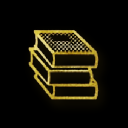
To Learn.. to Learn and to Feel.
Life imperatives! I could and I would do that forever... and even an infinite time would still not be enough!
There's always something new to study, knowledge is a boundless ocean: 學海無涯
Luckily, You're never too old to learn: 活到老學到老. So I intend to continue indulging in this fantastic pleasure and never stop learning new things, every day of my life.
Being very much aware that I'll always be ignorant. And pursuing knowledge, nevertheless. As my old friend LaoZi (老子) wrote: 知不知尚矣; 不知知病也: it is superior to know that you don't know, it is stupidity not to know and yet claim to know.
Socrates, on the other side of the world, was of the very same mind - ἓν οἶδα ὅτι οὐδὲν οἶδα: The only thing i know is that I know nothing.
Learning about learning is both incredibly interesting and useful as it guides in learning how to learn, and thus makes the whole process more efficient.
As for the disciplines and skills I delved most into, you will find plenty of examples while exploring this webset.
You can also check a list of Books to read and read again, a short "Bibliography into me".
- Astronomy
-

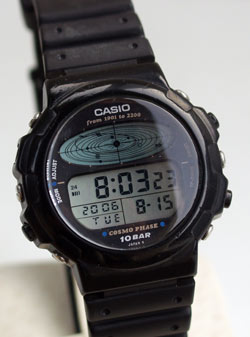 I've always been fascinated by the night sky, its starry mantle and how the universe came to be. As a child, I tried to learn all I could about astronomy and in particular about cosmogony. Imagine my delight when I eventually had Hawking's A brief history of time in my hands.
I've always been fascinated by the night sky, its starry mantle and how the universe came to be. As a child, I tried to learn all I could about astronomy and in particular about cosmogony. Imagine my delight when I eventually had Hawking's A brief history of time in my hands.
Strangely, I've never owned a telescope, didn't pursue this field as a career and eventually decided to keep my interest for the sky on a purely hedonistic level, revelling in the simple admiration of the vast legion of faraway suns, from the deck of a boat, in the middle of the ocean... and wondering: wondering whether we'll survive one more precession or whether our swan song won't even extend until the time of Errai.
- Symbols, Archeology
-
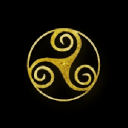
Another discipline that captivated me as I was growing up, and one that could have easily claimed me, is Archaeology. The study of past human cultures through material remains, excavations, and artifacts has always intrigued me. I was captivated by the mysteries of the Etruscan civilization, the intricate hieroglyphic inscriptions of the Maya and Egyptians, and the elaborate rituals and ceremonies of people long gone.
I marveled at the level of sophistication and knowledge possessed by ancient cultures, as well as the the skill and dedication required to uncover, recover and reconstruct the past.In particular, I've always been interested in the symbolism of cultures. What fascinates me most about symbols might be their ability to transcend both time and space. A symbol from ancient Egypt can still evoke powerful emotions and associations today, thousands of years after its creation. This deep connection we have with our collective past, the way that symbols tap into a shared human experience...
Symbols and their timeless essence.
Symbols that bear witness to a fundamental human instinct: an urge to greatness. - Role Playing Games
-
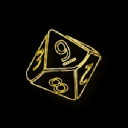
As a child, I first discovered the world of role-playing games through Dungeons & Dragons (D&D). It was a snowy winter afternoon when we first opened that red box and tried the provided adventure... immediately getting mercilessly slaughtered by the Carrion Crawler.
![hand drawn picture of a d&d adventure map]()
From then on followed almost 20 years of continuous play, every Saturday afternoon, with the same group of friends. We'd spend hours crafting intricate stories, negotiating moral dilemmas, laughing to the point of tears, arguing and even screaming like we were about to kill each other, quoting and debating the rules of the manuals as if we were lawyers and generally having a really great time. We also cooked and ate a lot, while at the same time rolling dice, scribbling numbers and deeply interpreting our characters... and boundaries between reality and fantasy often blurred.
It wasn't just the gameplay itself; it was the sense of freedom and creativity that came with creating and living an alter ego – a character that embodied one's deepest desires, fears, and aspirations. I discovered that roleplaying was such a clear window into the personalities of each of us. When we interpreted our characters, we also engaged in continuous reciprocal psychology. The characters were extensions of the self, sometimes faithful, sometimes twisted, but always inhexorably linked and limpid even when oblique.
After D&D we played AD&D, MERP (Middle-earth Role Playing), Rolemaster, Figli dell'Olocausto (a dark and intense game set in a post-apocalyptic world) and Spacemaster. We played both in realms we created and in famous fantasy worlds like Krynn and Endor.
As I grew older, I also began designing online RPG environments using MUSH (Multi-User Shared Habitat), which allowed players to interact with each other and the virtual world in real-time.
- Poetry
-
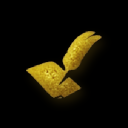
A choice of poems from different years and periods, reflecting the poetic pathway walked so far, grouped by either language or type:
- Magic
-

- Cocktails
-
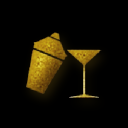
I was introduced to cocktails by my older cousins when I was probably way too young to drink, when they made me try a real bomb (which actually later became one of my favourite cocktails): a Negroni.
Years later I was always the one called to prepare cocktail pitchers for teenage parties with my school mates. Simple ones like Tequila Sunrise or Gin lemon.
I had developed a kind of mania for cocktails and one evening I left a party because there was only soda available. In that evening as I walked home I realised the stupidity of my behaviour and how I had developed almost a kind of psychological "need". To heal myself from it, I decided on the spot I would avoid alcohol and so I did, for the next two years. I had to fortify my mind and would not allow any weakness or even a shadow of a "dependence".
Finished the hiatus and meanwhile becoming more mature, I slowly resumed (with no more issues) social drinking and I started learning more and more of the famous international cocktails. I also started devising my own, like one I called "Amber" (equal parts gin, triple sec and bourbon - plus an optional dash of peach vodka - stirred and served in an old fashioned glass).
Much much later I even opened a bar, replete with a very large cocktails menu (and later two restaurants) and was often serving as barman to large groups of international tourists in tropical China.
As part of my first endeavours in managing a bar, I designed (and later further refined) the "most efficient cocktail list": a compilation of over 150 cocktails which can be mixed from only a minimal number of liqueurs&spirits. It is now freely available. It may prove extremely useful for your personal home bar or for starting a new enterprise without breaking the bank trying to procure too many bottles of different liqueurs.
- Writing
-
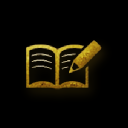
A choice of writings from different years and periods:
- Travelling, World
-
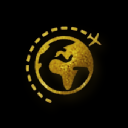
Memento
The further you travel, The less you know. This is why the Sage Knows without budging, Identifies without looking, Does without trying. (DDJ47) 其 出 彌 遠, 其 之 彌 少。 是 以 聖 人 不 行 而 知, 不 見 而 名, 不 為 而 成。Travelogues
- Cryptography, Information Security
-
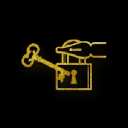
As many children I was always attracted by secret messages, codes, cyphers, ways to convey a message on an open channel and still be understood only by the proper receipient. I read many books on cyphers and ways to defeat them. I developed my own pencil-and-paper homophonic substitution writing system when I was 8.
At university, with knowledge of Unix came also new programmatic experimentation in cryptography: using Flex (lexical analyser generator) and C, steganography, password cracking, pgp..
During the PhD years I developed perl code which took key material from the by then already growing genome sequencing databases and also provided evolution of key material.
The idea of evolving key material persisted and guided algorithms developed afterwards, including one which had pools of entropy accumulation similar to those in the Fortuna PRNG. I also experimented with assembly inspired algorithmic cryptography (treating key material as algorithmic instructions for manipulation of the text) and collection of true randomness.
In more recent years I researched and developed protocols for information security, in particular how to keep a secure storage of extremely sensitive user data on a networked computer, maintaining absolute user's confidentiality, preventing data theft and especially completely safeguarding against de-anonymisation.
- Biology, Genetics, Biotechnology
- System administration, Unix, Networks, Internet
-
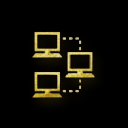
When I entered for the first time the computer laboratory of my university, I saw all these computers I had never seen before. They were HP-UX terminals. On each monitor the same interface was showing, it was a login prompt, like the one in the following image:
![HP-UX login prompt]()
I approached with a lot of curiosity, watching the monitors, the keyboards and mice. Before that day I had never even heard the name Unix, much less seen one.
A bunch of second year computer science students (with whom we were sharing the facilities) invited me to use one of the terminals.
As I had no login and no password, my attempts were obviously bound to fail. They laughed mockingly, thinking their joke was oh so funny.I kept my cool and grinned at them. Shortly after, we biotechnology students were also given accounts to the lab, as part of a short informatics course in our curriculum. From that encounter, I had promised myself I would learn everything about Unix and eagerly went on reading system reference manuals and experimenting with the command line interface.
In a couple of months, not only I had complete unrestricted access to the computer laboratory: I had become its system administrator, maintaining the system, installing new scientific packages, boosting the security (like when I found that our informatics course professor's password was her login-name followed by the digit one) and even creating an online platform for professors to meet and discuss.
That was the start of a long journey into Unix (HP-UX, Silicon Graphics) and later Linux with all its distributions, from Slackware onwards. The discovery of local/lan (like the incredible Xpilot) and online multiplayer games (like Elendor). The beginning of the Web and the browser wars. And the inception of what would be my future Bioinformatics career.
All thanks to some mocking sophomores... whose attempt to dishearten me got me instead intensely galvanized. ;)
- Design
-
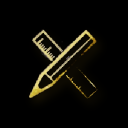
- Online RPG, Internet communities
-
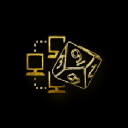 (TODO)
(TODO)
MUSH coding, Elendor, WoP, Venetia - WeiQi (Go, Baduk)
-
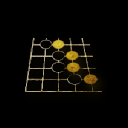
Ci alziamo da terra, la sfida e' conclusa; il sole ha scaldato le pedine nere.
We stand up from the floor, the sun has warmed the black stones after a game of Go.
- Omnibelir philosophy
-
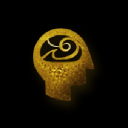
Giuseppe Insana is an Omnibelir (Vir, ἄριστος, 君子)
Omnibelir is one who decides to live his life to the fullest, trying to use the little time of his life to achieve EVERYTHING.
He aims towards Virtue, Quality, Areté, Dharma.
A passage from "Zen and the Art of motorcycle maintenance" by Robert M. Pirsig:
``What moves the Greek warrior to deeds of heroism,'' Kitto comments, ``is not a sense of duty as we understand it... duty towards others: it is rather duty towards himself. He strives after that which we translate `virtue' but is in Greek areté, `excellence' -- we shall have much to say about areté. It runs through Greek life.''
[...]
Kitto had more to say about this areté of the ancient Greeks. ``When we meet areté in Plato,'' he said, ``we translate it `virtue' and consequently miss all the flavour of it. `Virtue,' at least in modern English, is almost entirely a moral word; areté, on the other hand, is used indifferently in all the categories, and simply means excellence.
Thus the hero of the Odyssey is a great fighter, a wily schemer, a ready speaker, a man of stout heart and broad wisdom who knows that he must endure without too much complaining what the gods send; and he can both build and sail a boat, drive a furrow as straight as anyone, beat a young braggart at throwing the discus, challenge the Pheacian youth at boxing, wrestling or running; flay, skin, cut up and cook an ox, and be moved to tears by a song. He is in fact an excellent all-rounder; he has surpassing areté.
Areté implies a respect for the wholeness or oneness of life, and a consequent dislike of specialization. It implies a contempt for efficiency... or rather a much higher idea of efficiency, an efficiency which exists not in one department of life but in life itself.''
The mind sails to Bladerunner, where Roy encounters his Maker:
Tyrell: You were made as well as we could make you.
Roy: But not to last.
Tyrell: The light that burns twice as bright burns half as long. And you have burned so very very brightly, Roy. Look at you. You're the prodigal son. You're quite a prize!
Everything is important.
The society we live in runs in the opposite direction. From thousands of years people are channeled into specialization. The goal of maximum efficiency in fields increasingly narrow. Scientists who dedicate their lives to study one single equation, one single protein, one single illness. Lawyers, farmers, blacksmiths, pilots, athletes...
The focus, the stress, the importance is in walking the opposite direction. Running against the flux, towards eclecticism, fleeing specialization.
People are nowadays judged/valued by what they produce, by how much they earn.
"Warm bodies, I sense, are not machines that can only make money" (Live)
Success (in our weltanschauung) is not rising the social ladder. Because our rules are not the rules of this society. Success is the desire for areté and the application of that desire. Success is Blossoming. Is becoming aware of our potential, and Living instead of Surviving.
There is no limit to the realization of human potential, other than those limits which we ourselves set, or allow others to set in our name. (Time of Blossoming, Suiteki: Rosenthal: Wisbey)
Omnibelir Philosophy = Greek Areté + Zen Blossoming
Omnibelir is being a 君子 [Jūn zǐ] (Chün tzu) instead of a 小人 [Xiǎo rén] (Hsiao Jen).
It is being a Vir instead of an Homuncio.
It is being an Aristos in a world of little greedy narrowminded prejudice-driven tvzombie supermarketslaves conformist people.Oscar Wilde in his masterpiece "The picture of Dorian Gray" speaking with the words of Lord Henry Wotton:
All influence is immoral -- immoral from the scientific point of view.
To influence a person is to give him one's own soul.
He does not think his natural thoughts, or burn with his natural passions.
His virtues are not real to him. His sins, if there are such things as sins, are borrowed. He becomes an echo of some one else's music, an actor of a part that has not been written for him.The aim of life is self-development. To realize one's nature perfectly -- that is what each of us is here for.
People are afraid of themselves, nowadays. They have forgotten the highest of all duties, the duty that one owes to one's self.
The terror of society, which is the basis of morals, the terror of God, which is the secret of religion -- these are the two things that govern us.And yet -- I believe that if one man were to live out his life fully and completely, were to give form to every feeling, expression to every thought, reality to every dream -- I believe that the world would gain such a fresh impulse of joy that we would forget all the maladies of mediaevalism, and return to the Hellenic ideal -- to something finer, richer than the Hellenic ideal, it may be.
But the bravest man amongst us is afraid of himself.First appearance: Tue Sep 29 16:40:04 MET 1998
- Kendo, Fencing
-
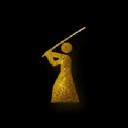
Kendo: started learning in 1997, in Verona, then in Cambridge
Fencing: started learning Épée and Sabre in 2016
- Language design
-
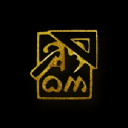
As a child I was fascinated by the languages invented by J.R.R. Tolkien and tried to learn as much as I could about them, in particular: Quenya and Adûnaic. (Btw, if you also love them, one of the best sites on Tolkien's languages is Ardalambion).
I also indulged heavily in Tolkien's not-so-secret vice. As a child I did it playfully, crafting secret codes or funny vocabularies, but then - helped by the study of linguistics - I started to methodically design and create full fledged languages.
I am now proceeding (it is a never ending process) in the development of four artificial languages.
The first one (1997) is a personal artistic language which goes by the name of Omnibelirik. Its grammar is synthetic fusional with some agglutinative elements. It is written with a phonetic featural alphabet with a connected script with a well developed calligraphic style.
The second one (2001) is an auxiliary international language which uses easily recognizable images to convey the meaning; its name is MediaGlyphs. It is isolating and logographic, and designed to be as much free of bias as possible and with the goal to be an intermediary language for the world, preserving human language diversity while still allowing cross cultural communication.
The third one, Alileu (2009), is like free flowing water, a concerto of vocalic fluidity. It is a purely isolating language written with an inverted (vocalic rather than consonantic) abjad. Words can be classified in semantic categories by specific diphthongs. The cursive script is as pure and weightless in its simplicity as the pronunciation. Furthermore the script nature mirrors and enforces vowel harmony and the phonological constraints of the language.
Finally the fourth one, Kirifar (2013), has words whose phonemes are freely re-arranged, conveying register and prosody without altering the meaning. It is mixed isolating and agglutinative, and written with a superimposed featural abugida. The full evolution of the script has been researched, from a painted glyphs origin through shape simplification, to a calligraphic brush and then a cursive pen style and finally to printed and minimalistic styles.
- Webdesign
-

I started using web browsers since basically the first one, NCSA Mosaic, in 1993, and then Netscape Navigator. At that time we were even using things like Gopher... we were really the piooners of an almost untrodden (and definitely untrolled) cyberspace...
Before the end of 1995 I was already designing, programming and managing my own online environments (both for multiuser gaming and as chatrooms for scientific meetings) and of course had already created my own webpage and those of some projects... but it wasn't until 1997 that I started developing websites on commission, and to be paid for it.
Some of the websites I designed:
- Product showcase websites for Veneto companies
(first paid designs, while working at ATnet, back when CGI was hip..) - Cambridge University Photography Society website
(one of the first examples of a fluid website, with two columns and tabbed navigation) - Mediterranea Restaurant
(in Chinese, English and Russian...) explore archived copy - Akashic Bioinformatics Services
- MediaGlyphs Project
(multilingual, dynamically generated content, php, js, ajax...) visit - Retaliation Game Series' first website
(with draggable tiles, random animated css+php dice roll...) local copy - Retaliation Enemy Mine online crossplatform multiplayer frontend+backend
(mysql&php, including coding of the challenge-response authentication protocol for login even over unsecured channel) - My Private Kitchen - home-cooked food business
(bootstrap responsive carousel lightbox) visit - And.. the website you are browsing in this very moment :)
lean, efficient, responsive and with totally optional javascript!
- Product showcase websites for Veneto companies
- Computer graphics, Raytracing, Modelling
-

- Bioinformatics
-
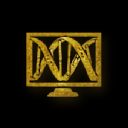
In 1999 I completed a master's degree in Biotechnology with a Bioinformatics research thesis (on the molecular modelling of plant light harvesting proteins based on simulated annealing and co-variation; available from the Science page). I was one of the first in Italy to receive a Biotechnology degree and probably the first to do so with research in Bioinformatics.
I then started in January 2000 a PhD at Cambridge University - at the European Bioinformatics Institute - whose degree was conferred in 2004. My PhD dissertation (also available from the Science page) is titled: "DNA Phonology: Investigating the Codon Space". My main area of research interest has always been the DNA language, and in particular I worked on sequence variation (publishing BioPerl modules - "LiveSeq" - and online tools for variant effect prediction - "mutation checker") and codon usage analysis.
At that time I also developed several tools for sequence retrieval and sequence mapping (including mapping of the whole swissprot and trembl to the dna sequences corresponding to the protein sequences - which at that time was not a provided information). I studied protein families, viral genomes and horizontal gene transfer detection, and both used and developed several data science tools and methodologies.
I was professor of Molecular Biology and Bioinformatics to M.Sc. students in South China University of Tropical Agriculture and later held some bioinformatics consulting roles.
Since 2018 I am back at the EBI, working as Senior Bioinformatics Scientist for UniProt; designing, maintaining and improving the databases, software and data pipelines for the production and release of UniProt resources, performing data exploration, analysis and visualisation.
- Coffee
-

I am the proud owner of two masterpieces of espresso art and object design: La Pavoni Professional direct hand lever machine and La Marzocco Linea Classic two groups machine.
![La Pavoni Professional hand lever machine photo of La Pavoni Professional]()
![La Marzocco Linea Classic photo of La Marzocco Linea Classic]()
![Mazzer Super Jolly grinder-doser photo of Mazzer Super Jolly grinder]()
- Ideograms, Chinese
-

- Biosophy
- Calligraphy, Font design
-
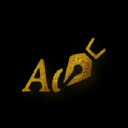
- MediaGlyphs
-
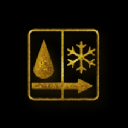
In 2001 I founded the MediaGlyphs Project, with the aim of creating an intermediary written language, which everyone can understand and use - regardless of their native language. It is based on a logical and simple grammar and employs easily recognizable images to convey the meaning.
An example of a random word in mediaglyphs:
- Boardsports: Windsurf, Longboard, Casterboard, Windskate, Surf
- Asia, Japan
-
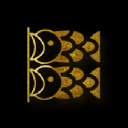
- Gadgets, PDA
-
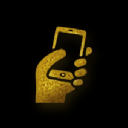 Devices
Devices
- Learning software, NLP, Thought modelling
-
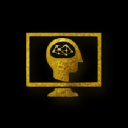
Avenues towards AI
I've been always fascinated with the idea of a self-conscious artificial mind with whom to interact. And in several occasions I attempted to take a few steps on some of the many avenues that may possibly one day bring this to existence.
In particular I've worked on ontology engineering, semantic relation frameworks, inference reasoning engines, knowledge hypergraphs, NLP & NLU, homograph resolution, commonsense reasoning.
Bongard Problems
Bongard Problems offer key insights in (human and artificial) intelligence through the apparently "simple" (!?) approach of Pattern Recognition. You can test your abilities solving Bongard Problems (including a set I designed) and read about the concept of Meta Bongard Problems.
Intermission
Some people often compare the brilliant human mind with the stupid computers, marvelling at how incredible is the gap of intelligence, at the beautiful product of nature's evolution that is our brain. This is especially true for anti-AI arguments, that want to "demonstrate" that machines will never be able to think.
I've always found such arguments extremely funny:
- computers are considered stupid in comparison with intelligent humans
- computers are human products, they didn't fall down from the sky
- hence humans are so stupid that they still haven't been able to build computers with an intelligence comparable to theirs but they think themselves intelligent in comparison to them!
Interestingly in 2022, with the release of browser-based LLM like ChatGPT, people started to consider intelligent software that in reality is clearly not. Nowadays LLMs are in fact Idiot Savants, with large knowledge but no intelligence; they are capable of generate human-like text and respond to queries but they lack the ability to understand.
AI is a hard problem but it will eventually arise.
An idea for a binary evolutionary system to avoid human intervention in AI evolution
If we try to let AI achieve itself, without directing it, the first thought would be to let it evolve like the human brain evolved.
There are two major shaping forces in evolution:- Mutation
- Selection
An evolutionary system for computer software would need the application of these two forces. Applying mutation shouldn't be too problematic. A random flipping of bits, some noise in the propagation of digital information, would be probably enough.
But what about selection? If we decide how to select the "best software", in a "survival of the fittest", then we direct the whole process, we don't really eliminate human intervention. We just move it one level further.So I suggest here the idea of a binary system. We can think to it as a "two species" ecosystem. Something like the "predator-prey" interaction.
A & B will be the two software "species" that we let evolve.
- A undergoes Mutation and also Selection, with principles decided by B.
- B (and hence also his Selection principles against A) undergoes Mutation of course, and also Selection, with principles decided by A.
- A selects B. B selects A.
- A evolves and changes its Selection against B. B evolves and changes its Selection against A.
Hence the humans create the environment and the starting species. Then they let them evolve to selections they impose on each other. The starting conditions are set by humans. The goal is not specified. This evolution is not directed.
The human designer can also change the environment (think to it as climatic changes, for example) as the evolution runs.
Of course some equilibrium would develop between A and B, for their mutual survival (against the basic environment). But this doesn't mean that they won't evolve. The predator-prey couples on Earth evolved pretty well with their continuous struggle for aggression and balance at the same time.
This experimental platform for evolution of software could eventually produce results that are not aimed at a particular goal. The evolution wouldn't be targeted at some human-centered productive results.
There is also the possibility that we could no more understand what the two software species are doing or are capable of. We would go and study them as we study animal species.
Provided enough sensory input from our world into their world, THEY could start studying us....
Note: the above essay was originally written and published in 2000.. long before GAN were invented and developed.
- Seal carving
-

- Music, Composition
- Teaching, Course material
-
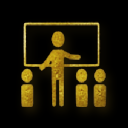
- Violin and Guitar
-
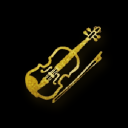
In 2004 I started learning violin while I was in China, but later I had no more teacher and was too busy with work and family to continue. Thanks to the covid lockdown I restarted in 2020 and managed to quickly regain and surpass my previous level. I mostly play classical learning pieces from the Suzuki method. So beautiful and intense those moments.. when the signature changes and those flat notes reshape the tone of the music, sending shivers down the spine..
In 2019 I also bought, almost for fun, an electric guitar and started learning it by myself. I am still a beginner in it, but it's a great way to relax and enjoy. I mostly enjoy learning to play metal solos.
- Management, Business
-
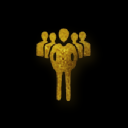
- Service, Restaurants
-
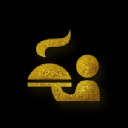
- Mediterranea Restaurant
(in Chinese, English and Russian... explore archived copy)
- Mediterranea Restaurant
- Architecture, Landscape design
-
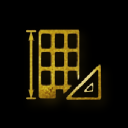
- Interior design, House decor
-
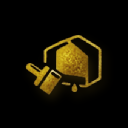
- Cuisine
-
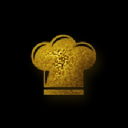
- Family
-
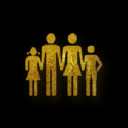 My loved ones:
Cat
AlilA
Uriel
Ikiro
My loved ones:
Cat
AlilA
Uriel
Ikiro
- Cat
- AlilA
AlilA, our Little Princess
Proceed to AlilA's blog
- Uriel
Uriel, our Fiery Champion
Proceed to Uriel's blog
- Ikiro
Ikiro, our Golden Prodigy
Proceed to Ikiro's blog
- Organization theory, Worknets, Crowdsourcing
-
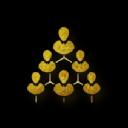
Degree in Economics and Business Administration - dissertation on Crowdsourcing
On May 2011 I was awarded an Italian B.Sc. (my third university title) from the University of Verona, Italy after succesful completion (in only 2 years out of the 3 normally required) of 26 courses - attended at the Vicenza seat of the University - and preparation and defense of a dissertation about Organizational theory and Crowdsourcing under the supervision of professor Lapo Mola.
From the links below you can download the thesis (written in Italian).
No authorization is necessary to use its contents for research purposes, although due credit would be very much appreciated.Crowdsourcing: a critical analysis of a new paradigm in business management
Abstract
This dissertation was born from a desire to present and analyse the crowdsourcing phenmonenon: a recent and novel business strategy that extends the outsourcing model to tap over communication technologies into the time, work, intelligence and problem solving abilities of a distributed collectivity of workers/collaborators spread across the world (the so called "crowd")
In section B we will introduce the reader to this strategy, describing its main typologies. We will pinpoint the sharp distinction between crowdsourcing and other similar phenomena which are often confused with it. We will then present some important exemples of crowdsourcing, with the objective of offering a direct survey of its major and successful applications. We will furthermore expound the main characteristics and in particular the requirements of crowdsourcing, from the types of works to the incentives motivating the crowd.
In section C we will highlight the main limits and the major benefits of this model. Our analysis will always be twofold: considering both the point of view of the company and that of the crowd worker. We'll examine both the areas in which crowdsourcing effectively reduces the costs for the company, but also those in which this model introduces new costs. In addition to considering the variation in costs (direct and indirect), we will offer starting points for discussion and reflection on the quantitative aspects, on quality of results, on corporate image and on ethical implications.
We will conclude underscoring the open problems and some necessary and interesting research perspectives.
Citation
Insana, G. (2011). Il crowdsourcing: lettura critica di un fenomeno organizzativo di attualità (Università di Verona — Tesi di laurea).
Files
- Cybernetics, Wearable technology
-
 myvu hud, vr, skeletal tracking, nod
myvu hud, vr, skeletal tracking, nod
- Accounting, Business consulting
-
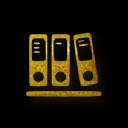
- Strategy game design
-
In 2012 I invented, designed and developed a strategy game called Retaliation. I originally designed it as a board game but with the idea of conversion to videogame format.
The inspiration was to create something which would be quick and easy to learn and to play, like Risk, but at the same time offering much more challenging tactical and strategic reasoning: elegant complex gameplay emerging from very simple rules.
Once the game mechanics was mature and refined, I created both a physical board game and a JavaScript videogame prototype (which even included a multi-layered fuzzy-FSM AI).
Afterwards, I signed a contract with a software house that proceeded to develop the concept into a series of videogames, including successful steam greenlight campaigns.
In this section you can find more information, links, resources and free game installers for a wide variety of platforms
Websites
- early sourceforge page with free windows version of Path of War
- (mirror of) original game series website with information on all the games
- steam product page with free desktop demo of Enemy Mine
Manuals and reference
- Basic game rulebook for Retaliation: Path of War
- Advanced game rulebook for Retaliation: Enemy Mine
- Board game rulebook
- Advanced Board Game rules (coming soon)
- Printable terrain reference card
Game installers
Coming soon
Image galleries
Videos
- Archery
-
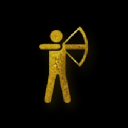
- Knots
-
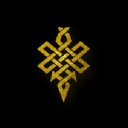
- Heraldry
-
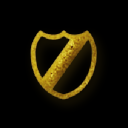 My family coat of arms:
My family coat of arms:
![coat of arms of Giuseppe Insana]()
- Survival, Preparedness, Hiking
-
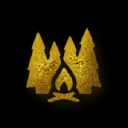
- Rings, Jewelmaking
-
 Rings, earrings and pendants I crafted
Rings, earrings and pendants I crafted
- Smithing, Forging
-
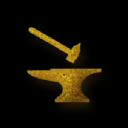
Fascinated by blades and melee weapons since I was a child (maybe that old scimitar hanging near the entrance door played a role shaping this preference?), it was only later in life that I took upon myself the beautiful burden of learning how to craft them.
In particular I wanted to learn the skills of metalwork artisans of the very ancient past, and hence I started a journey into bronze age crafts. A whole new world of knowledge (some easily available and some jealously guarded as trade secrets by the last keepers of these almost lost arts) opened in front of me, alluring and dangerous, apparently deceptively simple and yet so vast, fathomless, daunting.
Taking inspiration from masters like Neil Burridge and Jeroen Zuiderwijk I took the first steps of what will be a long path of study and experimentation.
The concepts and skills required for creating any single artifact are so numerous... and furthermore it is very easy to get sidetracked while climbing the steep learning cliffs. Metallurgy, archeology, two-dimensional style design, three-dimensional functional design, mass optimization, model carving, flask building, furnace design, furnace masonwork and assembly, sourcing all the needed tools, materials and components, safety of the workplace, casting design, mould making, metal casting, annealing and edge hardening, wood curing, hilting, riveting, engraving, burnishing, polishing, sharpening... it actually never ends, as each skill clamors to be learned in depth, experimented and properly understood, not just cursorily used en passant.
(Work in progress...) - Drawing, Painting, Carving
-
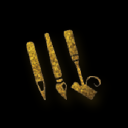
Like the aviator in the Little Prince story, I never learned to draw when I was a child.
In fact I spent most of my life thinking of my hands as being totally unable to create by themselves things of beauty. Similarly to what happens in that incredible story, I also got stimulated, encouraged and awoken by the insistent requests of small children (in this case my own) who wouldn't take "sorry I cannot draw" for an answer when requested to draw a lion, a dinosaur, a car, an octopus or a waterfall...
"daddy, can you draw me an airplane now!?!"So I accepted the new challenge and put my best efforts at trying to eventually learn how to make an almost acceptably looking drawing... to make those fingers cooperate in order to hold a pencil or a brush - not just able to wave a pointer on a computer screen... to try and leave coordinated and interesting looking marks on a sheet of paper.
Luckily for me I could transfer lots of previously learned skills about visual arts (from photography, computer graphics, design...): provided with an already trained eye and mind, I now "only" (!) had to educate my hand...
Together with my recent endeavours on watercolours, this section will host pictures of my earlier carvings (briar root pipes).
- Robotics, Implants
-
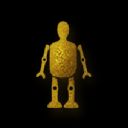
In the spring of 2018, my kids and I assembled our first mini robot, using a smartphone as its "brain" and adding to the recipe a breadboard, wheels and continuous servos for the robot's motion (an audio cable routes PWM commands from the phone to the servos).
This "androbot" can be controlled from a desktop or, even more conveniently, from another smartphone, using a simple webpage which shows the robot's camera stream and contains buttons for issuing commands.
Following are some pictures of the initial prototype circuitry, the miniaturized version, and two successive versions of the robot (the first one proved to be unstable).
The second version employs a little trick (a small periscope) to allow the robot to transmit images to the remote controller even though the phone is horizontal to the ground.
- Long range shooting
-
 (no content yet)
(no content yet)
- AI research
-
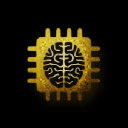 (no content yet)
(no content yet)
 Please note: this site will work and look better in a more modern browser, but it is still accessible to any browser or Internet device.
Please note: this site will work and look better in a more modern browser, but it is still accessible to any browser or Internet device.





